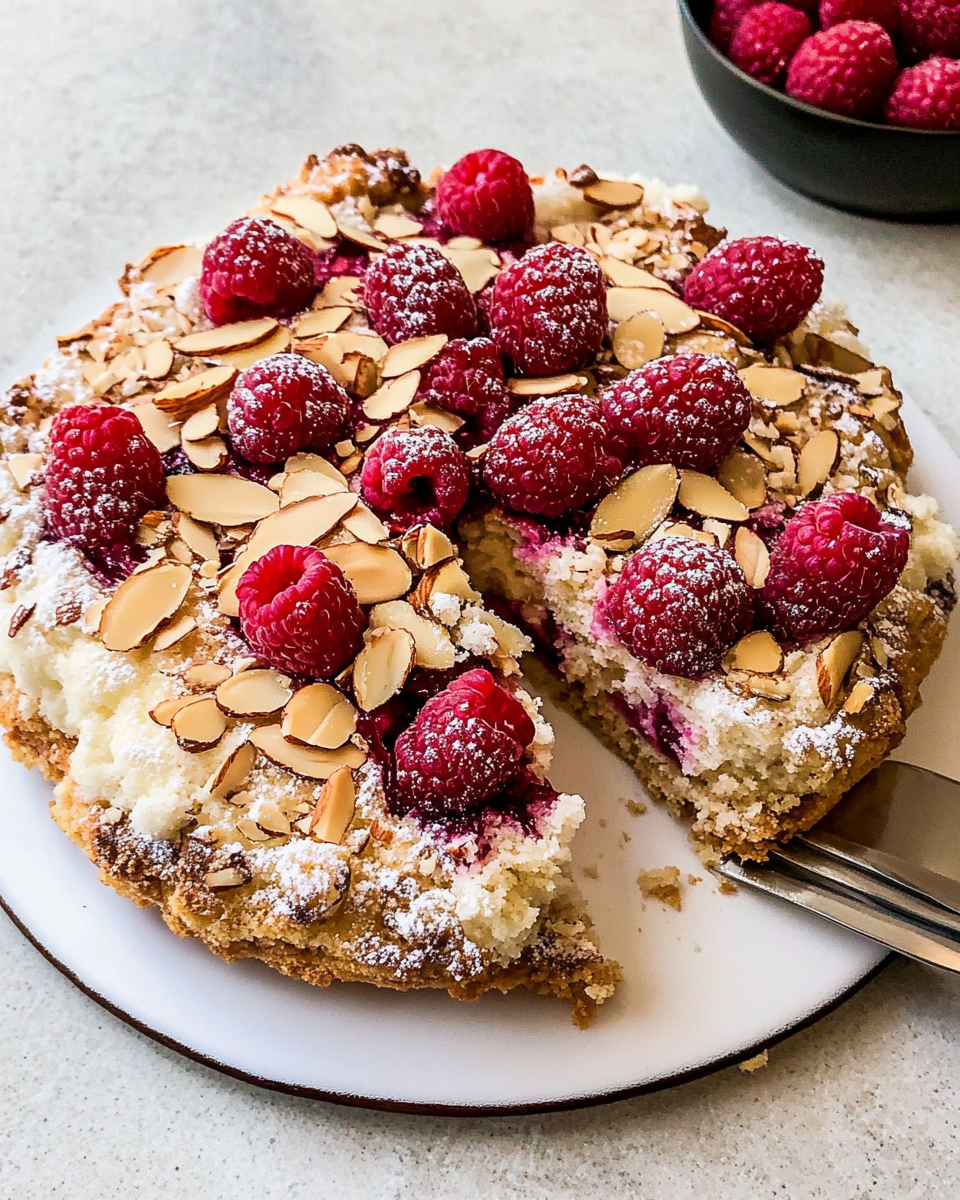A classic French dessert, Cherry Clafoutis features ripe cherries baked in a light, custard-like batter. It’s simple to prepare, elegant in presentation, and offers a balance of tart fruit and creamy texture, perfect for any occasion.
FULL RECIPE
Ingredients
- 1 cup whole milk
- 3 large eggs
- 1/2 cup granulated sugar
- 1/2 cup all-purpose flour
- 1 tsp vanilla extract
- 1/4 tsp salt
- 2 cups pitted fresh or frozen cherries
- 1 tbsp unsalted butter (for greasing)
- Powdered sugar (optional, for dusting)
Directions
- Preheat oven to 350°F (175°C).
- Grease a 9-inch pie dish or baking dish with butter.
- In a mixing bowl, whisk together the milk, eggs, sugar, flour, vanilla extract, and salt until smooth.
- Spread the cherries evenly across the greased baking dish.
- Pour the batter gently over the cherries.
- Bake for 35–40 minutes, or until the top is lightly golden and the center is set.
- Let cool slightly before serving. Dust with powdered sugar if desired.
Nutritional Information
- Calories: 180 per serving
- Fat: 5g
- Saturated Fat: 2g
- Carbohydrates: 30g
- Sugar: 20g
- Protein: 5g
- Fiber: 1g
History and Origin of Cherry Clafoutis
Cherry clafoutis is a traditional French dessert that originates from the Limousin region of France. The dish dates back centuries and was originally made with black cherries picked fresh from local orchards. The name “clafoutis” comes from the Occitan word “clafotís,” meaning “to fill,” referring to the way the cherries fill the baking dish beneath the custard batter.
Cultural Significance
In France, clafoutis is more than just a dessert—it’s a celebration of seasonal fruit and rustic cooking. It is often enjoyed during family gatherings and festivals, symbolizing comfort and home-style cooking. Its simplicity highlights the natural flavor of cherries, making it a beloved classic.
Choosing the Right Cherries
Traditionally, whole cherries with pits are used in clafoutis to add flavor during baking. Black cherries like Morello or Bing are preferred for their tartness and juiciness. When pitted cherries are used, the dish is technically called a “flaugnarde,” but many modern recipes use pitted fruit for convenience.
The Role of the Batter
The custard-like batter is the heart of clafoutis. It’s similar to pancake or crepe batter but thicker, made with eggs, flour, milk, and sugar. The batter sets around the cherries while baking, creating a delicate texture that is both creamy and slightly firm.
Texture and Flavor Profile
The clafoutis balances the tartness of cherries with the sweet, smooth custard. The top often develops a light golden crust, while the inside remains soft and silky. This contrast makes every bite interesting, combining warmth and freshness.
Variations and Adaptations
While cherry clafoutis is traditional, variations include using other fruits like blueberries, plums, or apples. Some recipes add almond flour for nuttiness or incorporate spices such as cinnamon or almond extract to enhance flavor.
Nutritional Aspects
Cherry clafoutis is relatively light compared to many other desserts. It contains moderate amounts of sugar and fat but provides protein from eggs and some fiber from fruit. It can be made lighter by using low-fat milk or alternative sweeteners.
Serving Suggestions
Clafoutis is typically served warm or at room temperature, often dusted with powdered sugar. It pairs well with a dollop of whipped cream, a scoop of vanilla ice cream, or a drizzle of crème fraîche for added richness.
Seasonality and Availability
Fresh cherries are at their peak in late spring to mid-summer, making clafoutis a seasonal treat best enjoyed during warmer months. Frozen cherries are a convenient alternative when fresh fruit is unavailable.
Baking Tips for Success
Ensuring the batter is smooth and well-mixed is crucial for an even texture. Using room-temperature ingredients helps prevent lumps. It’s important not to overbake the clafoutis to keep it tender inside while achieving a slightly firm top.
Common Mistakes to Avoid
Overbaking can result in a dry and rubbery texture, while underbaking will leave the custard too runny. Not greasing the pan sufficiently can cause sticking. Also, using overly watery fruit might affect the consistency, so draining excess juice is advisable.
Historical Serving Traditions
Originally, clafoutis was served plain, without toppings, focusing on the pure flavors of the fruit and batter. Over time, additions like powdered sugar and cream have become common to enhance taste and presentation.
The Science Behind the Custard
The eggs in the batter coagulate during baking, setting the custard and trapping air pockets, which gives clafoutis its lightness. The flour acts as a stabilizer, preventing the mixture from curdling and helping it hold its shape.
Pairing Clafoutis with Drinks
Cherry clafoutis pairs beautifully with light, fruity wines such as a chilled Rosé or a sparkling wine. For non-alcoholic options, a fresh berry-infused iced tea or a mild coffee complements the dessert’s sweetness.
Gluten-Free and Dietary Variations
For gluten-free versions, alternative flours like almond or rice flour can be used. The recipe can be adapted for dairy-free diets by substituting milk with almond or oat milk, though this may slightly alter texture and flavor.
Using Clafoutis in Contemporary Cuisine
Modern chefs sometimes reinterpret clafoutis by incorporating unusual fruits, adding herbs like thyme or basil, or serving it with savory accompaniments. It remains a versatile dish that bridges traditional and innovative cooking styles.
Storing and Reheating
Clafoutis can be stored in the refrigerator for up to three days. Reheating gently in the oven or microwave helps preserve its texture. It can also be served cold, which some prefer for a firmer custard experience.
Nutritional Enhancements
Adding nuts like almonds or walnuts can boost nutritional value and add crunch. Using organic or fresh eggs and milk enhances quality, and opting for natural sweeteners like honey can reduce refined sugar content.
Psychological Comfort of Clafoutis
Many people find clafoutis comforting because it evokes home and tradition. The warm custard and fruit create a soothing effect that is perfect for relaxing after a long day or sharing with loved ones.
Conclusion
Cherry clafoutis stands out as a simple yet elegant dessert that celebrates seasonal fruit with a creamy custard base. Its rich history and cultural roots add depth to its appeal, while its versatility invites countless adaptations to suit modern tastes and dietary needs. Whether enjoyed warm or cold, plain or adorned with toppings, clafoutis offers a delightful balance of flavors and textures that make it a timeless favorite in both French kitchens and around the world.






